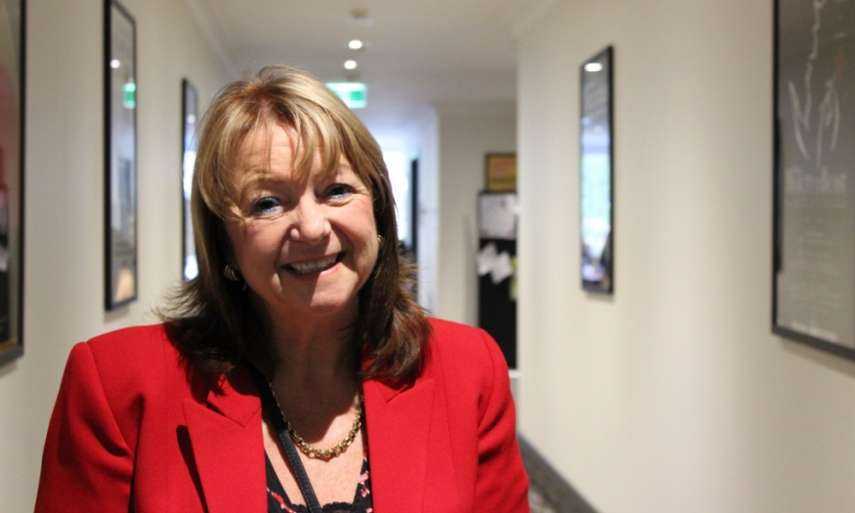Hello and welcome to the first episode of Teacher magazine's podcast series on School Improvement – I'm Jo Earp. Today, I'm talking to Karen Endicott, principal of Sarah Redfern High School in New South Wales. Since taking on the role in 2009, she has led a series of changes aimed at building staff and student capacity.
They include implementation of a new management structure, pedagogical framework, introduction of a Year 7 selective class, academic challenges for students and an initiative that has seen teachers plan and design 192 units linked to the new National Curriculum. NAPLAN results have improved, staff collaboration has increased and a culture of respect now permeates the school.
Jo Earp: Karen Endicott, when it comes to school improvement, one of the questions that you’re often asked by other educators is ‘where do I start?’. So, can we go back to 2009? What was that starting point for your school improvement journey?
Karen Endicott: ... it was actually the [Friday] before I was appointed to start at the school, I went and visited. And, I looked at the school environment and unfortunately the environment had a lot of graffiti, it was dirty, it was unpleasant, you walked in and you just had this feeling that it was uncomfortable – it wasn’t pleasant.
And what I’ve found is, whenever I go new into an organisation, or into a new school, a new position, into different schools, what I do is I listen, I observe, I watch people’s behaviour, and I write myself questions: Why do they do that? What is the reason for that? ... and you listen to the conversations that teachers are having – such as negative conversations about student behaviour, about what the students are doing, you hear the students talking, you listen to their comments ‘oh, we can’t do this’, ‘no-one expects us to do that’, ‘no-one expects us to do well’, ‘we’ll never get these opportunities’, you know ‘we come from Minto’.
So, I suppose that was the catalyst in me just listening and observing and collecting the evidence, because that’s anecdotal, but I also needed to look at data. I needed to look at suspensions, I needed to look at student attendance, but the other thing I needed to look at was staff absenteeism, I needed to look at staff skills and knowledge, I needed to look at how the staff were feeling – morale – so all of those things actually identified from my perspective that we needed to change.
JE: From everybody else’s perspective ... was there a general acceptance when you got there that things needed to change, and change drastically?
KE: ... they knew that things needed to change, but they just didn’t know where to start. It just all looked too big and so, and that’s the hard part. Because, when you go in as a new leader, you have to allow the people to develop trust and confidence in, that you have the skills and ability, you know, to manage the school and the students. I kept hearing from staff ‘Oh, but that’s the Sarah way, we do things the Sarah way’. I suppose what we had to do is I had to say well ‘What is this Sarah way? And, really, is it working for us?’ And so it was then up to me to, I suppose, in my presentation I had to have my backpack with all my tools to start unpacking what it was. What was their mindset? What were they thinking? What were their expectations? How could I get them to have high expectations of our students? And that was the difficult part, so the one thing I say to people, whenever you’re implementing change, is that you have to understand how to manage complex change – you have to have the evidence, you have to have the tools, to not only drive change on data, but you also have to have the tools to drive change on changing people’s mindset and changing people’s culture.
Step by step we looked at, we analysed what existed ... we reflected on things that were happening in the school that we didn’t like. What were we doing well? What weren’t we doing well? Because, [and] I think it’s really important, you can’t go into a new environment and make a judgement. You’re not part of their history, you’re not part of their culture, so that’s why it’s really important that they are the ones that analyse what exists. But then you also have to give them the opportunity to look into the crystal ball, about what they would like the place to be. And I think that’s a process, and I think that’s really important. And then people start to see well, maybe we can do this. And so then we have to look at how we’re going to do that.
JE: And of course, that involves the school improvement plan – a really vital document there. So, once you’ve done all that assessment and learning the current situation, and then that informs the plan ...
KE: I identified eight key factors that you needed to look at. You need to look at the culture, you need to analyse the values of the school, you need to look at what the people’s beliefs are about teaching and learning, so then you can start building on the quality instruction and the programs, you can start building on the leadership team. You have to identify the capacity of your staff because it’s sometimes some of the school leaders that are part of the culture can actually hinder the changes that you want to make because they’ve been quite happy where they are. So, you look at how do you distribute ‘the plan’, how do you design ‘the plan’.
One of the first things that you will see at Sarah Redfern High School is we don’t have a normal executive structure. We actually disbanded the hierarchical structure, and one of the things that you will see is that we actually have an operational strand, because one of the things in a school is that there are so many operational things that have to happen day to day, every day, that have to run like clockwork so the teachers can do their quality teaching and learning. Now, so I have an operational team that is looking after all those day to day organisational things and that allows my teaching and learning and curriculum team to get on with those quality instructional programs. So, what happened was we actually identified through this senior management structure – and this came out of all the research I kept reading about what is it that the school needs to do to have an effective school.
We have to look at our leadership structure, we have to move away from ‘the known’. The known is, we have head teachers of KLAs, we have, you know, subject specialist areas. Well, for my school, that wasn’t what we needed – what we needed was this structure of what I call managers. So, I have a Business Manager, I have an Operations Manager, I have a Strategic Planning Manager, I have a Curriculum Manager and I have a Student Wellbeing Manager. And they are now the team that drives every agenda that we’re putting through. [For] every change agenda they are focused – they’ve got their target areas, they’ve got the outcomes that they have to achieve and they are driving working with teams of teachers, because the teachers are the ones that make this happen. Unless you have them on board and committed to what you’re doing then nothing will happen within a school.
JE: It’s been lovely hearing about your journey. Good luck in the future and thanks very much for speaking to Teacher magazine.
KE: Pleasure.
To listen to more Teacher magazine podcasts and to access our articles, videos and infographics – visit www.teachermagazine.com.au, or join our community on social media via Facebook and Twitter.
- Make sure you don't miss a Teacher podcast, subscribe for free by visiting acer.ac/teacheritunes or www.soundcloud.com/teacher-ACER.



